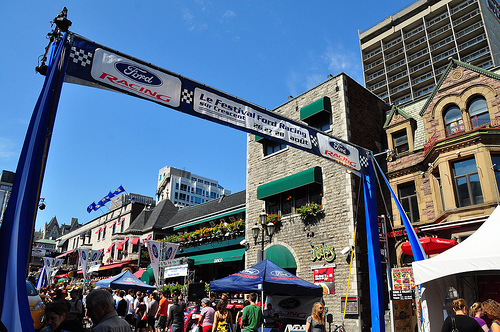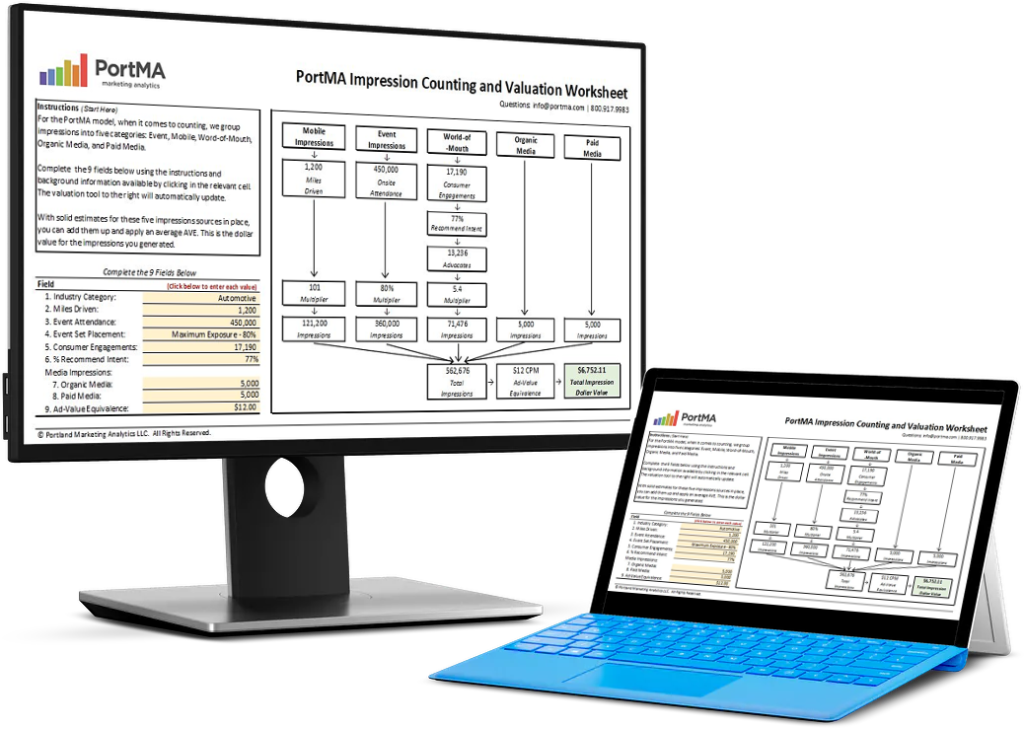
This article continues to explore the challenges of experiential marketing impressions and how to count them. In this article, we’ll cover onsite impression counting methods.
This is Part 2 in a 4-part series detailing the contents of Podcast OOO – Pilot: Defining the Dollar Value of Impressions. (Go to Part 1 | Part 2 | Part 3 | Part 4)
Gathering Onsite Impressions Data
These are the impressions you generate from being onsite in the first place. Onsite impressions really have to do with your sponsorship package, your signage, and then how that signage or that footprint presence relates to the foot traffic at the venue. Similarly, onsite impressions are often called event impressions. They’re the same thing and follow an identical onsite impression counting method.
(You can listen to the full podcast episode below.)
To keep things simple, we’re going to start with getting accurate event attendance. You can get that from the venue manager. It’s going to be a little exaggerated in most cases, all due respect to the venue managers out there. There are other ways of getting more accurate event attendance.
Sometimes if you’re at a large event, the local police are going to have some accurate information. It’s common in municipalities to require a police officer onsite for every X number of people in attendance (often north of 20,000). Occasionally, the press will be able to cite specific numbers and where those numbers came from.
Determining your Onsite Impression Multiplier
Next, you look at where you were onsite related to foot traffic. For example, if you were at “Grand Central/ Action Alley” and attendees had to walk through your footprint to get to the venue, then 80% of attendance is a fair estimate. It’s not 100% because we’re always going to have somebody looking at their shoes, but 80% is going to be fairly easy to defend.
On the other hand, if you were right along the vendor row, you would have a lot more competition. Maybe attendees didn’t necessarily have to walk through your footprint because there were multiple entrances or exits. In this is the case you might want to think about something closer to 50% of attendance as being your onsite impression count.
Sometimes if you’re at a large event, the local police are going to have some accurate information.
Finally, you’ve got those sponsorships that were the last thing available, they’re back by the bathrooms. These were the less desirable spots when it came to overall venue awareness. If you had minimal presence then it’s probably best to consider 30% or less when it comes to your multiplier.
Moreover, those metrics of 80%, 50%, and 30% are loosely based on an analysis of sponsorship fees that was done quite some time ago. The more you rely on these percentages the more you’ll want to do a similar comparison for yourself and how you buy sponsorships. Considering the proportional difference between what you’re paying with the assumption that different fees will provide different levels of value. Using 80-, 50- and 30-percent are general starting points as they give you a consistent and reliable method for getting onsite impressions.
Further Reading
The third article in this series considers Word-of-Mouth and the incremental impressions you generated from consumer advocacy. You can read about this impression source in our article titled, “How to Include Word Of Mouth Impressions.”

Download the Free Spreadsheet Tool
CALCULATE THE DOLLAR VALUE OF EVENT IMPRESSIONS
PortMA Impression Counting and Valuation Worksheet
Download this spreadsheet and complete the fields for your campaign to get a clear count of your activation impressions translated into a Dollar Value of Marketing
Impression Spreadsheet
